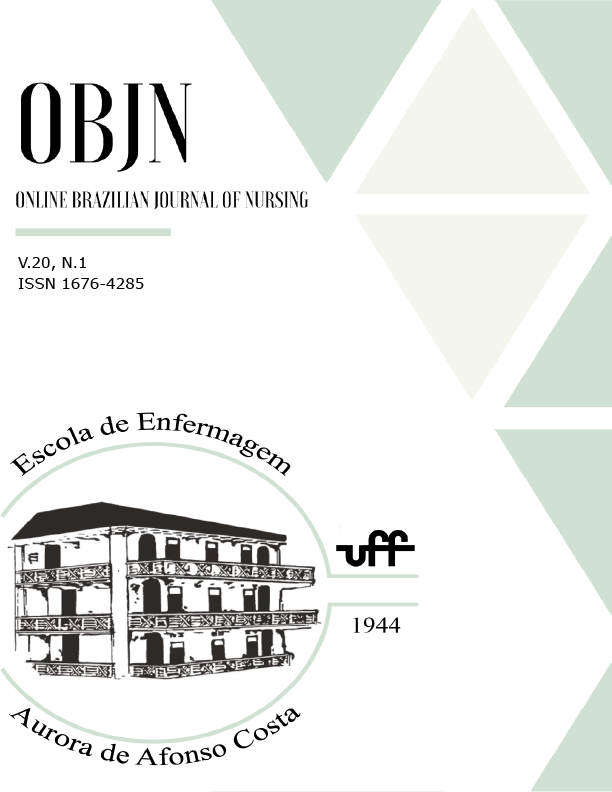Abstract
Objective: To evaluate the factors associated with shark attacks and deaths in Brazil. Method: This is a cross-sectional and quantitative study, carried out through virtual access to the Global Shark Attack File website. The analysis was performed in the R program, using descriptive statistics and the Pearson's chi-square and Fisher's exact tests. Results: There were 86 attacks, of which 26 (30.2%) resulted in deaths. An association was found between occurrence of the attacks and year, state, region, day of the week, shift and shark species, in addition to the victim's age group and gender and to the part of the body affected. No variable was associated with death as outcome. The state of Pernambuco accounted for the largest number of attacks (83.7%) and deaths (96.2%). Conclusion: Shark attacks were associated with nine variables: three related to the victim's characterization and six to the profile of the accident.
References
Kaminsk A, Bell KP, Noblet CL, Evans KS. An economic analysis of coastal beach safety information-seeking behavior. Agric Res Economics [Internet]. 2017 [cited 2020 aug 12];46(2):365-387. Available from: https://doi.org/10.1017/age.2017.17
Lemahieu A, Blaison A, Crochelet E, Bertrand G, Pennober G, Soria M. Human-shark interactions: The case study of Reunion island in the south-west Indian Ocean. Ocean & Coastal Management [Internet]. 2017 [cited 2020 aug 12];136:73-82. Available from: https://www.sciencedirect.com/science/article/abs/pii/S0964569116303246
International Shark Attack File. Yearly worldwide shark attack summary [Internet]. 2018 [cited 2020 aug 12]. Available from: https://www.floridamuseum.ufl.edu/shark-attacks/yearly-worldwide-summary/
Ricci JA, Vargas CR, Singhal D, Lee BT. Shark attack-related injuries: Epidemiology and implications for plastic surgeons. J Plast Reconstr Aesthet Surg [Internet]. 2016 [cited 2020 aug 12];69(1):108-14. Available from: https://www.ncbi.nlm.nih.gov/pubmed/26460789
Zziwa EB, Muhumuza C, Muni KM, Atuyambe L, Bachani AM, Kobusingye O C. Road traffic injuries in Uganda: pre-hospital care time intervals from crash scene to hospital and related factors by the Uganda Police. Int J Inj Contr Saf [Internet]. 2019 [cited 2020 aug 12];26(2):170-175. Available from: https://www.ncbi.nlm.nih.gov/pubmed/30541384
Posada MAG, Suñe AB, Siero JMN, Azuraga CIS, Soler MJC. Damage control resuscitation in polytrauma patient. Rev Esp Anestesiol Reanim [Internet]. 2019 [cited 2020 aug 12];66(7):394-404. Available from: https://www.ncbi.nlm.nih.gov/pubmed/31031044
Ritter E, Amin R, Cahn K, Lee J. Against common assumptions, the world’s shark bite rates are decreasing. J Marin Biology [Internet]. 2019 [cited 2020 aug 12];7184634. Available from: https://www.hindawi.com/journals/jmb/2019/7184634/
Shark Research Institute. Understood, protected, thriving [Internet]. 2020 [cited 2020 aug 12]. Available from: https://www.sharks.org/global-shark-attack-file
Shark Research Institute. Global shark attack file [Internet]. 2020 [cited 2020 aug 12]. Available from: https://www.sharks.org/mission-work
Silva ACR, Nascimento RM. Learning to live with sharks: humans and no-humans relations in Recife and Fernando de Noronha Archipelago (BRA). Cad Elet Ciênc Sociais [Internet]. 2019 [cited 2020 aug 12];7(2):66-81. Available from: http://www.periodicos.ufes.br/cadecs/article/view/28292/20110
He P, Chaparro AAM, Farine DR. The role of habitat configuration in shaping social structure: a gap in studies of animal social complexity. Behav Ecol Sociobiol [Internet]. 2019 [cited 2020 aug 12];73(9). Available from: https://link.springer.com/article/10.1007/s00265-018-2602-7
Comitê Estadual de Monitoramento de Incidentes com Tubarão – CEMIT. Estatística dos incidentes com tubarões ocorridos no Estado de Pernambuco [Internet]. Recife: Secretaria de Defesa Social; 2018 [cited 2018 june 12]. Available from: http://www.portaisgoverno.pe.gov.br/web/sds/cemit1.
Saunders CJ, Adriaanse R, Simons A, Niekerk AV. Fatal drowning in the Western Cape, South Africa: a 7-year retrospective, epidemiological study. Injury Prevention [Internet]. 2019 [cited 2020 aug 12];25(6):529-534. Available from: https://injuryprevention.bmj.com/content/25/6/529
Preis LC, Lessa G, Tourinho FSV, Santos JLG. Mortality epidemiology for external causes in the period 2004 to 2013. J Nurs UFPE online [Internet]. 2018 [cited 2020 aug 12];12(3):716-28. Available from: https://periodicos.ufpe.br/revistas/revistaenfermagem/article/view/230886/28031
Klick C, Jones CMC, Adler D. Surfing USA: an epidemiological study of surfing injuries presenting to US EDs 2002 to 2013. Ame J Emerg Med [Internet]. 2016 [cited 2020 aug 12];34(8):1491-6. Available from: https://www.ncbi.nlm.nih.gov/pubmed/27262604
Gopinathan NR, Santhanam SS, Saibaba B, Dhilon MS. Epidemiology of lower limb musculoskeletal trauma with associated vascular injuries in a tertiary care institute in India. Indian J Orthop [Internet]. 2017 [cited 2020 aug 12];51(2):199-204. Available from: https://www.ncbi.nlm.nih.gov/pubmed/28400667

This work is licensed under a Creative Commons Attribution 4.0 International License.
Copyright (c) 2021 Array

